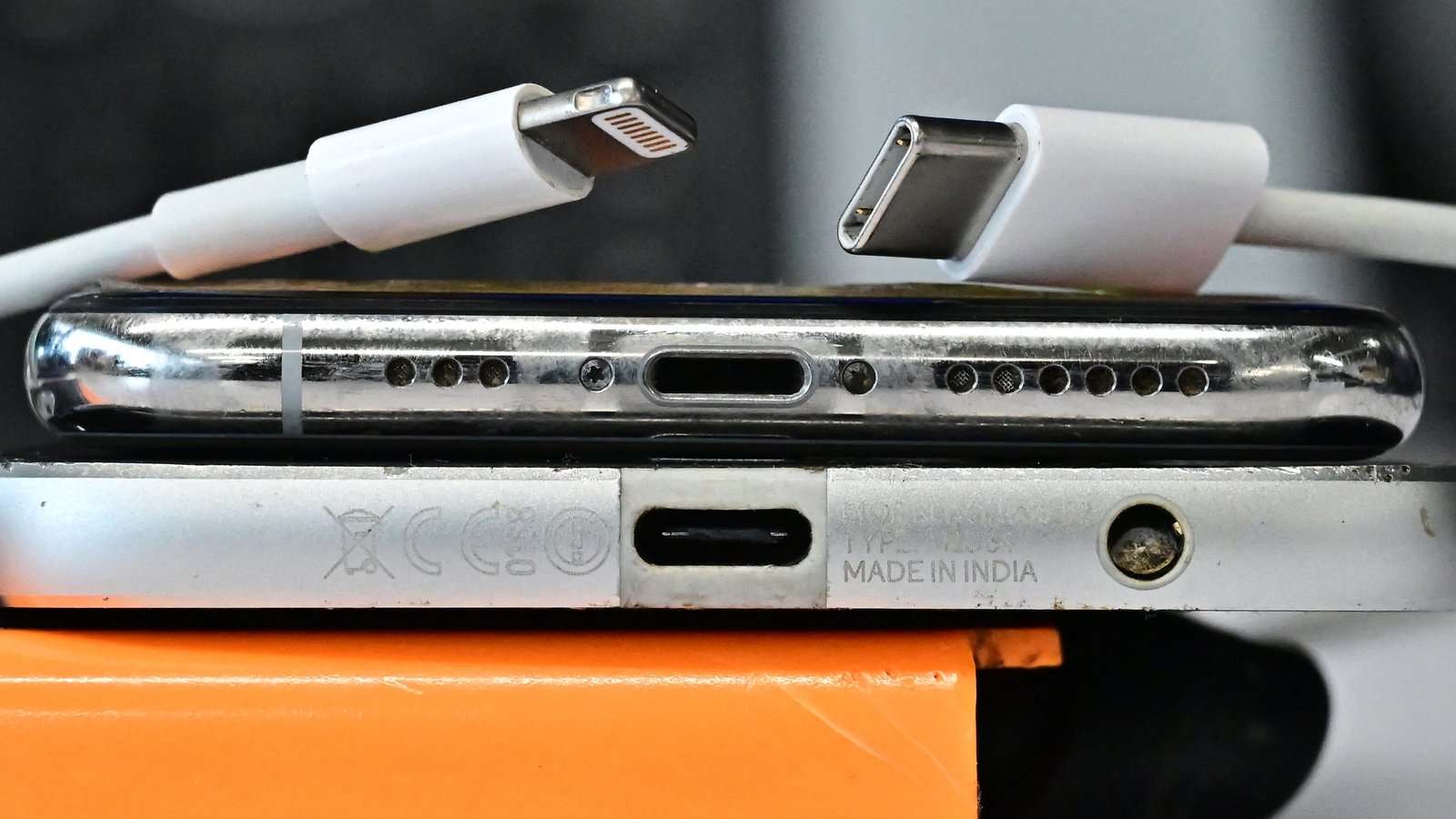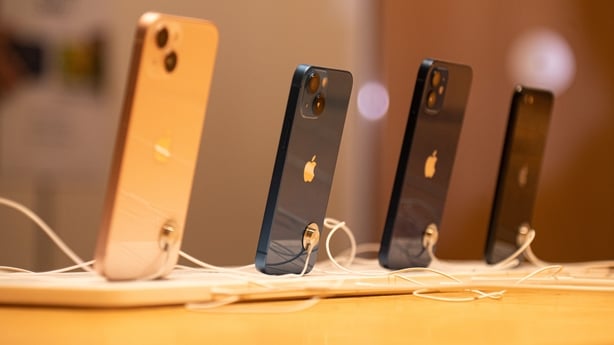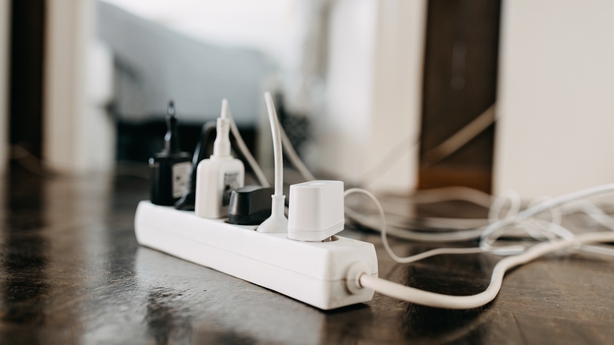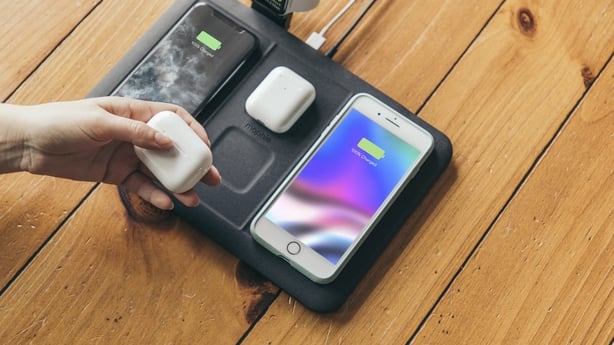USB-C replaces old headaches with new ones

If you’ve bought a piece of personal technology in the past two years, there’s a good chance it uses USB-C.
This thin, oval-shaped connection type – less than a centimetre wide – has rapidly replaced microUSB and even Apple’s Lightning as the default way to charge and transfer data to and from devices like smartphones, digital cameras and wireless headphones.
That transition has, in part, been sped up by a law in the European Union that requires a wide array of gadgets to use a common connection type from the autumn of this year on.
USB-C has plenty of advantages over what’s come before – with some hoping it will eventually allow consumers to rely on just one cable for all their gadget needs, cutting cost and waste.
But getting to that point is going to be far from easy.
So what is USB-C and how does it differ from what’s gone before?
We need your consent to load this rte-player contentWe use rte-player to manage extra content that can set cookies on your device and collect data about your activity. Please review their details and accept them to load the content.Manage Preferences
One of its big selling points of USB-C is the fact that it’s reversable – it doesn’t need to be facing the “right” way to be plugged in.
That means you’ll no longer have that frustration of trying to plug the cable in, having to flip it, only for it to still, somehow, not work.
It’s also reversable in the sense that the same connection type can be at both ends of the cable – so it’s not just replacing the small connector in the likes of your phone, but also the one that goes into your computer or plug.
That means that USB-C is ultimately replacing the big, rectangular USB-A connection that we’ve been using for close to 30 years now.
But beyond that very practical difference, it also has the potential to do a lot of different jobs.
While most people will first encounter it as a way of charging their phone, or transferring pictures from a camera, it can also be used as a means of powering and linking much bigger devices – including your laptop.
It can also be used as a connector for multiple monitors, as well as a high-end audio link for speakers or headphones.
And it’s potentially capable of carrying a lot of data and a lot of power, meaning faster charging and faster file transfers.
So this is designed to be the one wire to rule them all.
So this isn’t just an attempt to get you to buy more accessories?

No – some have complained about Apple changing its connection type – arguing they were just trying to get people to spend more on chargers and adaptors.
But this is one of the times where Apple is actually embracing the industry norm rather than going on a solo run with its own, proprietary standard.
USB-C has been in development for years and is backed by the USB Implementers Forum, is a cross-industry body that tries to agree to new standards in this area.
And while the small connection going into your phone has changed over the years this is the first time in nearly 30 years that there’s a push to really change the bit that goes on the other end.
Apple is part of that USB Implementers Forum but it’s actually a relative laggard in moving to USB-C – as anyone who’s bought an Android phone in the past two or three years can likely attest.
There are also lots of non-Apple Bluetooth headphones, and digital cameras already on the market, too.
Apple had been slowly rolling out USB-C on its devices – including its iPads and Macs – but took its time bringing it to its most popular product, the iPhone.
That was until the European Union stepped in and forced them to speed up their switch over.
What did Europe do?
In late 2022 it agreed a law that would require a range of personal devices – including smartphones, tablets, headphones and cameras – to use a common charging standard from the autumn of this year onwards.
It doesn’t necessarily have to be USBC – but that is the common standard at the moment.
Should the industry agrees a new, better standard down the line that, in theory, could become the default in years to come.
But Europe making that the law was a game-changer – because it forced companies like Apple to move.
In theory it could have launched an EU-only version of the iPhone with USB-C, but doing that would have complicated its supply chains.
Besides, after Europe moved, others countries including South Korea and India said they would follow suit, so the writing was on the wall, really.
And so, after more than 20 years of using their own charger type (if you include the iPod) they’re now the same as everyone else.
Why did Europe make such a push for a common standard?

The argument was that having a common charger would save Europeans money – they estimated €250m was spent each year in the EU on unnecessary charger purchases.
It’s something everyone has probably experienced at some stage – needing to buy a new cable or plug for their device even though they have 10 (incompatible) ones in the drawer.
And if it’s a very specific, company-owned standard – they might have had to pay a premium, because there’s no-one else who can make it.
But besides the consumer cost, another reason Europe wanted to see this switch was to reduce waste.
It estimated that chargers represent around 11,000 tonnes of e-waste in the bloc each year.
A common standard might not wipe that out completely – chargers and cables will still break – but the hope is that having one cable type will reduce the need to dump others just because we got a new device.
So this move is good for consumers and good for the environment?
It probably will be… eventually.
The financial and waste savings are obvious in the long-term – but in the short-term it’s probably going to create even more waste, and potentially cost too.
The fact that that classic blocky USB standard is now being replaced presents a lot of new headaches for users.
Most phones now don’t come with a power block in the box – the bit you plug into the wall – they just have the cable. So, if the cable is USB-C on both ends, they’ll need to get at least one new power block to charge it.
And, over time, all of the old plugs and cables they have will become of no use to them.
Or maybe they’ll need to get an adaptor or dongle so they can connect their phone to their older computer – which doesn’t have USB-C ports on it.
Then there are all of the consumer goods that have an old-fashioned USB port attached – maybe the stereo, or the car, or the plug-in recliner… or even the socket panel on the wall that has a spot for a USB cable.
All of that will eventually have to be replaced, which generates waste. Alternatively, people will have to buy adaptors – or additional cables – to be able to make it work with their new USB-C device.
And for most people there’s going to be an awkward in-between period where the new devices they’re buying have the new type of connection – but they still need to keep their old cables around all the same.
Most people don’t replace all of their personal devices in one go, so they’ll still need all of those other connection types… at least until they upgrade everything, which could take years.
So it’s a worthwhile goal; but the dream of having one cable for everything is still a while away.
But once we do make that switch over, we’ll just need the one cable for everything?

Well… not quite.
While the USB-C cables may all look the same, there can actually be a big difference from one connection to the next.
This is likely going to be a major source of frustration for users.
For example, some cables are capable of carrying significant amounts of power – meaning they can charge a phone extremely quickly. But others might just send a relative trickle of energy.
The same applies with data speeds –some cables would be able to send massive files across to your devices in no time at all, others might take an age to send a few pictures across.
But it likely won’t be easy to tell which one is which just by looking at it.
This will be an issue when people are seeking out the right cable to power up their laptop, or connect multiple monitors – both functions that will need high-capacity cables.
And people will also need to be careful to avoid cheap USB-C cables – which can do real damage to devices and even cause fires.
That is a problem with the existing USB standards – but it’s not something USB-C is going to solve.
So, all in all, the reality is that you’re probably not going to be able to dramatically reduce the number of cables you need in your house even when everything is USB-C.
Does wireless technology not make all of this irrelevant?

Potentially – but having a physical, plug-in connection is still the better option.
Wireless charging is getting faster, but it’s still slower than a plug-in charger.
It’s also still much less efficient – you could be losing anything between 20-50% of the energy used when wireless charging.
And that extra heat can, potentially, damage the battery in the long term – particularly if you’re doing wireless fast charging.
It’s also slower for transferring files too.
Anyone who has tried to use Bluetooth or WiFi to send across a large video, for example, will know that there can be a real lag compared to a cable.
If you’re doing that in any way regularly you’ll probably want to do it over a cable.
And, perhaps most importantly, having a port on the likes of your device really comes into its own when something goes wrong.
Often times when there’s some software issue, plugging it into a computer is the first step to solving the problem – and you need to do that if you’re trying to completely wipe and reboot it.
And if you didn’t have that port, you’re either having to send it off somewhere to get it repaired, at a cost, or you’re the proud owner of a very expensive plastic and metal brick.
Besides – wireless charging is a bit of a misnomer because you still need to sit the phone on the little puck or pad to charge it.
Most times that still need something, almost certainly with a wire, that gets plugged into the wall.
So even if you use wireless – you still need to have a charger of some kind with you




